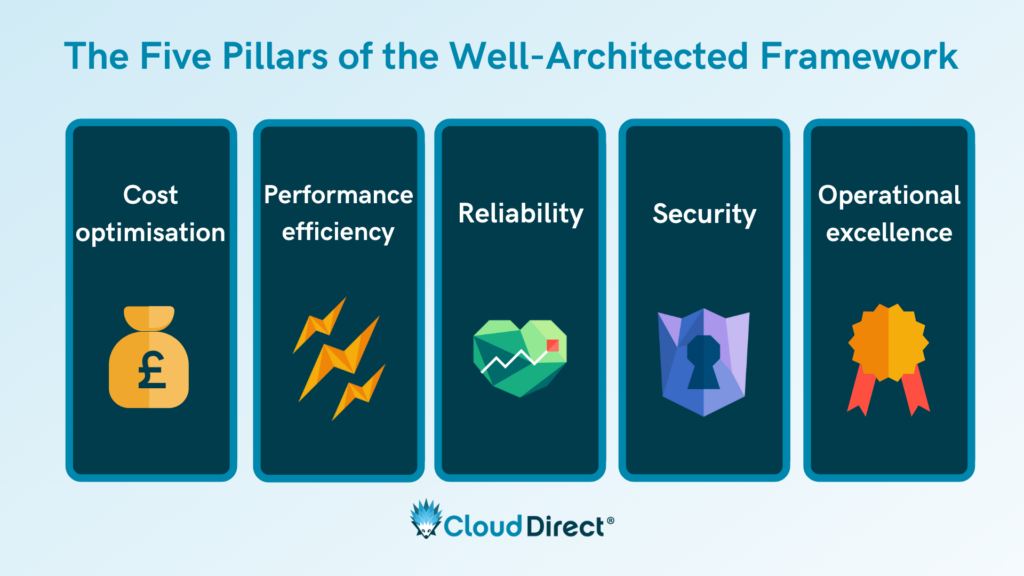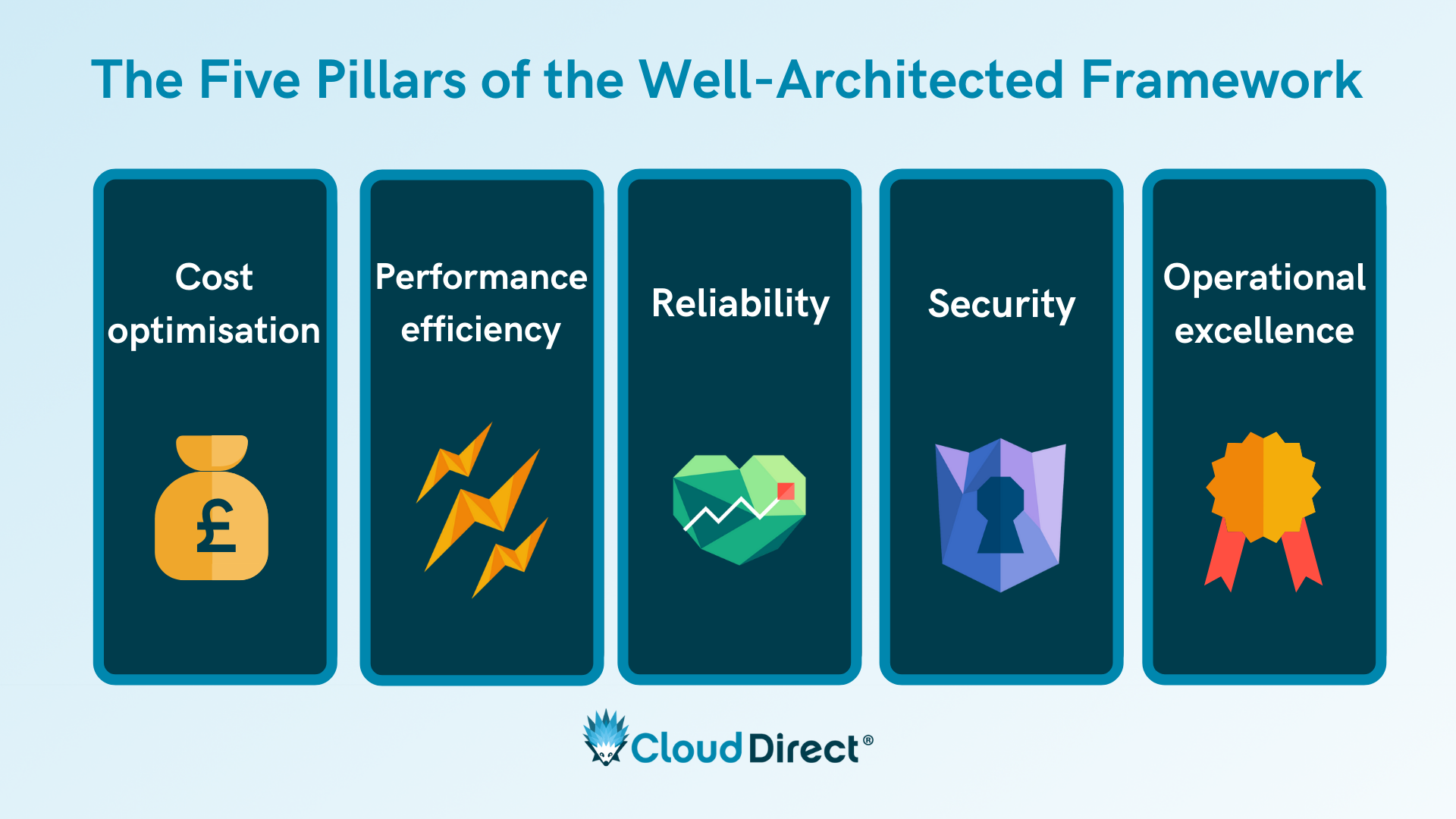
The Five Pillars of the Azure Well-Architected Framework
The Microsoft Azure Well-Architected Framework provides technical guidance specifically at the workload level across five different pillars; cost optimisation, security, reliability, performance efficiency and operational excellence. Aligning to the Azure Well-Architected Framework will allow you to follow Microsoft’s best practices.
So, you’re looking to learn more about the Azure Well-Architected Framework pillars? You’re in luck. In this blog, we will be explaining what the Azure Well-Architected Framework is and discussing each of its Five Pillars.
What is the Azure Well-Architected Framework?
The technology requirements of your business naturally change over time. Deploying business-critical applications can increase complexity and overheads substantially. To help manage this ever-growing complexity, Microsoft has created the Azure Well-Architected Framework, which follows strict industry guidelines to provide a set of Azure best practices.
The Azure Well-Architected Framework isn’t just for businesses that are looking to migrate to Azure. It can also be used by businesses who have already adopted the Microsoft Cloud and want to align their environment to best practices. Microsoft provides businesses with a Well-Architected Framework score to show how aligned you are to the best practices and areas you can improve concerning the five pillars.
The Five Pillars of the Azure Well-Architected Framework
The Azure Well-Architected Framework is made up of five pillars that outline industry best practices. The Five Pillars of the Azure Well-Architected Framework are:
- Cost management
- Performance efficiency
- Reliability
- Security
- Operational excellence
Each one of these pillars will enable your business to build a high quality, stable and efficient cloud architecture whilst having the ability to continuously optimise your workloads against Azure best practices. Ready to find out more? Let’s dive into what each of these five pillars involves.

Pillar one: Cost optimisation
The first pillar, and often the pillar most businesses are looking to optimise, is cost. When optimising costs, you should start by monitoring and analysing your Azure bill by setting budgets, pre-planning any Azure spend for teams, projects and future investments. But the optimisation doesn’t stop there. You should implement cost controls within your Azure Environment so your teams can work within the constraints of your spending policies and objectives. This allows you to manage costs and maximise the value you derive from Azure.
Pillar two: Performance efficiency
Your workloads must be able to scale to provide users with an optimal and cost-effective experience. Microsoft says that your performance efficiency should match application resource capacity to demand; enabling you to easily scale resources, identify & optimise bottlenecks, and optimise application code for peak performance. Optimising your Azure environment for performance efficiency will improve the ability of your system to adapt to changes in the workload.
Pillar three: Reliability
When using Azure, you want to design and operate mission-critical systems with confidence. The second pillar to the Azure Well-Architected Framework is reliability – which is a system’s ability to recover from failures and continue to function. You should start by defining availability and recovery requirements, then identify any possible failure points to determine how the application will respond to failure. You should then respond to failures by determining how best to address them based on established strategies.
Pillar four: Security
Azure is the cloud you can trust thanks to Microsoft’s investment of more than $1 billion in research and development by 3,500 security experts. However, secure workloads require more than a secure foundation. The third pillar of the Azure Well-Architected Framework is security. Microsoft says it’s important for you to consider your workload security as much as the platform you use. It’s important you leverage the tools, training and best practices available to help you not only detect but also respond to any security threats across your Azure environment.
Pillar five: Operation excellence
The final pillar in the Azure Well-Architected Framework is Operation Excellence. This involves the operations process that keeps applications running in production by implementing modern development practices like DevOps. For deployments to be reliable, they should be automated to minimise any human error. Any automation you implement should be a quick and repeatable process to avoid slowing down the release of new features. Finally, to achieve operational excellence, you must use monitoring and diagnostics to give operational insights to your systems and solutions.
Sources: https://azure.microsoft.com/en-gb/blog/introducing-the-microsoft-azure-wellarchitected-framework/
Azure Well-Architected Framework Recommendations
Are you looking to align your business to the Azure Well-Architected Framework? We’re offering a personalised 10-minute video from one of our Azure Experts, who will highlight recommendations on how to align your Azure environment to the Azure Well-Architected Framework. Want to claim your free video? Simply follow the link below.